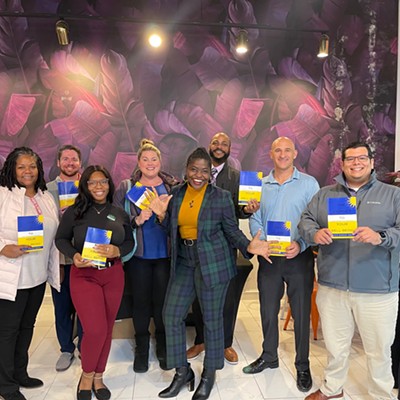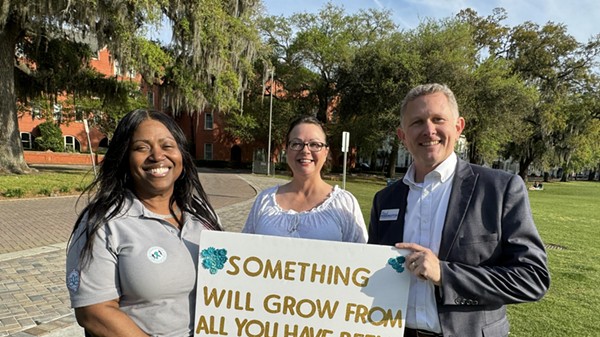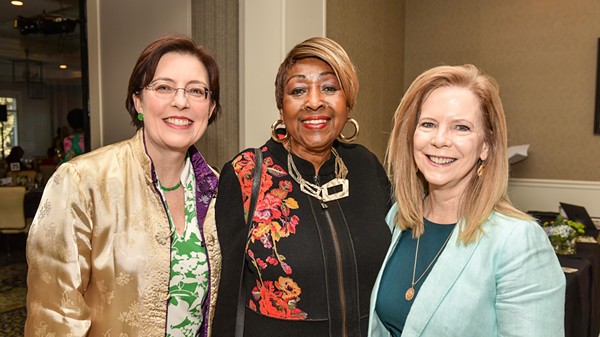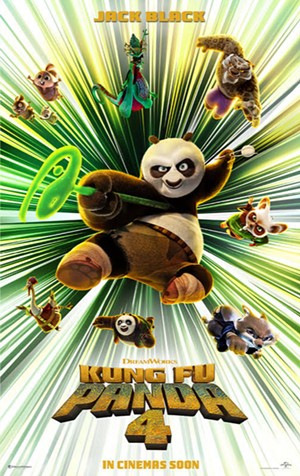With its long, rich and fabled history, Savannah has produced a treasure trove of ghost stories over the centuries.
Even after nearly 300 years of war, fire, plague and famine, parts of the city look much as they did 100 or even 200 years ago. Spanish moss drips from the trees, and verdant greenery creates dark shadows, adding to the haunting ambience.
In such a setting, it’s easy to imagine tormented spirits roaming the streets and hiding behind the facades of so many historic buildings. Everyone in Savannah knows at least one good “true” ghost story, and an entire industry has been built around visitors’ fascination with our ghostly inhabitants.
Many of these stories have been repeated time and again over the decades. Some have been compiled into collections of ghost stories, resulting in a thriving industry of home-grown ghost books.
Then David H. Rousseau and his wife, Julie Collins Rousseau, come along and turn everything upside down with their book, Savannah Ghosts. Rather than simply recount the tried and true legends and lore, what he calls “the stories Mama an’ them swear by,” David has added meat to the bones by novelizing the stories, while Julie has given the characters a face through her haunting illustrations.
Thus we find out that Rene Rondolia, the boy giant of a long-vanished east-end neighborhood known as Foley’s Alley, was not a callous and cruel serial killer as the legend goes, he was simply misunderstood. We come to realize that Alice Riley, the first person executed in the colony of Georgia back in 1734, was an indentured servant from Ireland and therefore could not expect much sympathy from the English judge who sentenced her to hang.
David gives these characters, both real and imagined, personalities and histories that help us understand their motives. “There are a ton of books done in a journalistic style,” he says.
“In my experience, people want to be entertained, not just informed,” David says. “If you retell a story that someone else tells, it has the same bullet points. Why not go one step further and tell it for the entertainment?”
As a tour guide for Savannah Walks, David knows what people want to hear. He says his approach to the stories gives modern residents and visitors to Savannah a view into the past.
“It all suggests what life was like during those times,” David says. “People say, ‘Now I understand what was going on back then.’ It goes deeper than simple retelling of folktales.”
In addition to conducting general history, Civil War and some ghost tours for Savannah Walks, David is a part-time teacher of design in the Savannah College of Art and Design’s foundation studies program. “I’ve done a little bit of writing here and there,” he says.
Previously, he worked at WTOC-TV as a news photographer, and he’s also done writing on a freelance basis. “This is my first published fiction,” he says.
Savannah Ghosts and a second book called Savannah Tavern Tales were compiled over about a year’s time. Both are being published by Schiffer Publishing, and both have the same type of format with both stories and illustrations.
“I took them on simultaneously,” David says. “It sort of fell into my lap.”
David was working as the general manager of Savannah Walks when one of Schiffer Publishing’s vice presidents came into town. “She knew I was connected in this industry,” he says. “We sat down over coffee. I had three or four pitches I wanted to talk to her about.”
The VP listened to the pitches, then said, “Why don’t you write a ghost book?” The rest, as they say, is history.
David didn’t have to look far to find an illustrator for his book. Julie is an award-winning illustrator and the first female professor in SCAD’s sequential art program.
“I have illustrated books for Sterling Publishing, Albert-Whitman and Co. and Walker Publishing,” Julie says. “I recently finished a graphic novel for NBM Publishing called Trailers, on which I collaborated with my colleague, Mark Kneece. I also illustrate covers for Canon, a comics anthology put out by Dove McHargue of Picsure Press.”
“She didn’t come into this because she’s my wife,” David says. “She’s a very talented illustrator over all. “I thought her work was very well suited for the stories,” he says. “She has the ability to condense the information into one page without giving it all away. You understand what is happening without it ruining the story for you.”
The drawings put the reader into the time and place of each story, David says. “Some are lighthearted and fun and some are foreboding,” he says.
“The nice part of the project is that we were living in the same house,” David says. “At any time, I could ask, ‘What do you think of this idea?’
“Another thing that separates this book from the other ghost books is the illustrations,” he says. “Everyone else used photographs. Julie did a fine, fine, fine job.”
“The images for each of the stories came about quite naturally,” Julie says. “David would portray such a vivid picture in his stories, and the image would just pop into my head. I did try for an ‘in between moment’ in each illustration, meaning I would try to portray the characters in the story in mid action or just before an action happened, or just in a quiet moment.”
Eventually, the book will be available in bookstores throughout Savannah. For now, it can be purchased at schifferbooks.com or at Savannah Walks, 37 Abercorn St. The cost is $12.95.
In addition to the Rene Rondolia and Alice Riley stories, there are accounts of the pest house that once stood beside Lazaretto Creek, the story of the duel that resulted in some of the hauntings at Moon River Brewing Co., the tale of shipbuilder Henry Willink and the tragic loss of his wife, an explanation for the haunting of the building at 9 Drayton St. that once housed Churchill’s Pub and the story of 6-year-old Gracie Watson, whose life-sized statue at Bonaventure Cemetery enchants visitors to this day.
Some of the stories come from the African-American storytelling tradition, including Bo-Cat, the story of a murder, Hag Ridden and No Mo’ Mojo. All of the stories in the book are based on research.
“These are stories that were taken from actual histories, journals, diary accounts or the Georgia Writers Project,” David says. “There are a multitude of sources that tell where the stories come from. They are all based in fact. This was a chance to try to make them a better read.”
David’s version of the Rene Rondolia story suggests that Rene may be been autistic. “If you look at that period of time, if someone was insane or malformed, they were locked in the basement or attic,” David says. “They never talked about you. I really wanted to show in this story that the monster isn’t Rene, the monster is us.
“My father works with autistic students,” he says. “Some of the points he relates come out in Rene. If you do the detective work and piece the story together, Rene may have been autistic.
“All the stories agree he was a very large child,” David says. “In all folklore, there is a grain of truth.”
In the book’s preface, David says all stories are true, even if all the facts in them aren’t. “Rene’s story may have started as a way to teach children to stay away from strangers,” he says. “It’s a morality tale.”
David is originally from northern Vermont. “I came down to Savannah to get my MFA in illustration from SCAD,” he says, which is how he and Julie met. “I graduated one year ahead of her,” he says.
Julie hails from southeastern Alabama and was hired by SCAD right after graduation.; “I really enjoy all the stories, but I guess my favorites would be Rene -- I cry every time I read it -- the story of Alice Riley, Bo-Cat, and the hag story,” she says.
“David and I have actually been working together on many projects over the years,” Julie says. “These books are the first to actually come to fruition. We are currently scheming up another book, this time a graphic novel. Stay tuned!”
In the meantime, readers will want to take a look at Savannah Ghosts. “The book is designed to turn the tale into a good story with illustrations,” David says.
“I think what we are trying to do is return storytelling to the audience,” he says. “Something that has been missing is good storytelling from sitting down with a book of short stories at night and reading a good story, then starting again in the morning with another story.
“That has been absent for a long, long time,” David says. “There is a lot of sentiment behind this book.” ç
Meet David H. Rousseau and his wife, Julie Collins Rousseau, at a book signing on Thursday, July 27 from 5-7 p.m. at the Marshall House, 123 E. Broughton St.
























